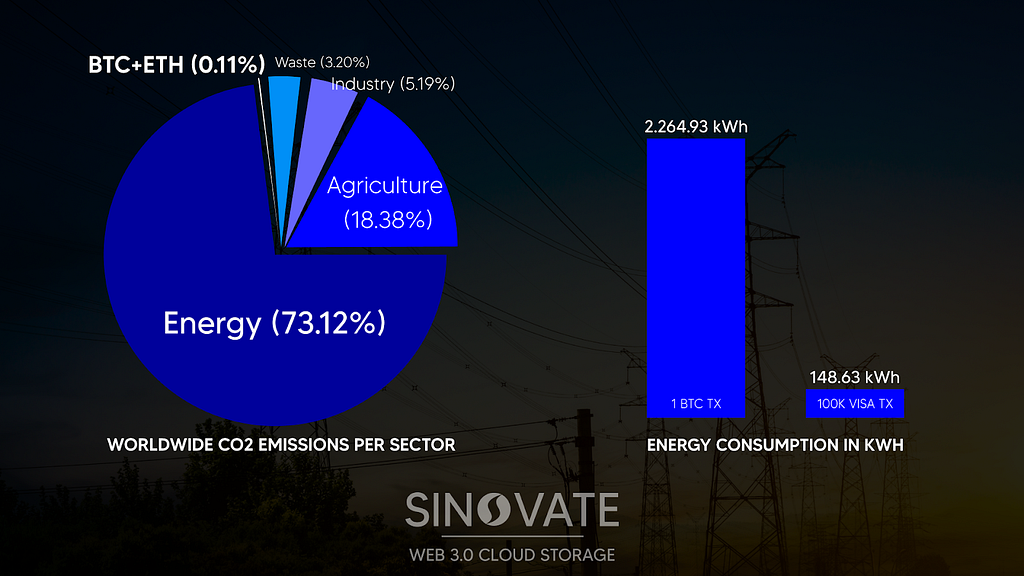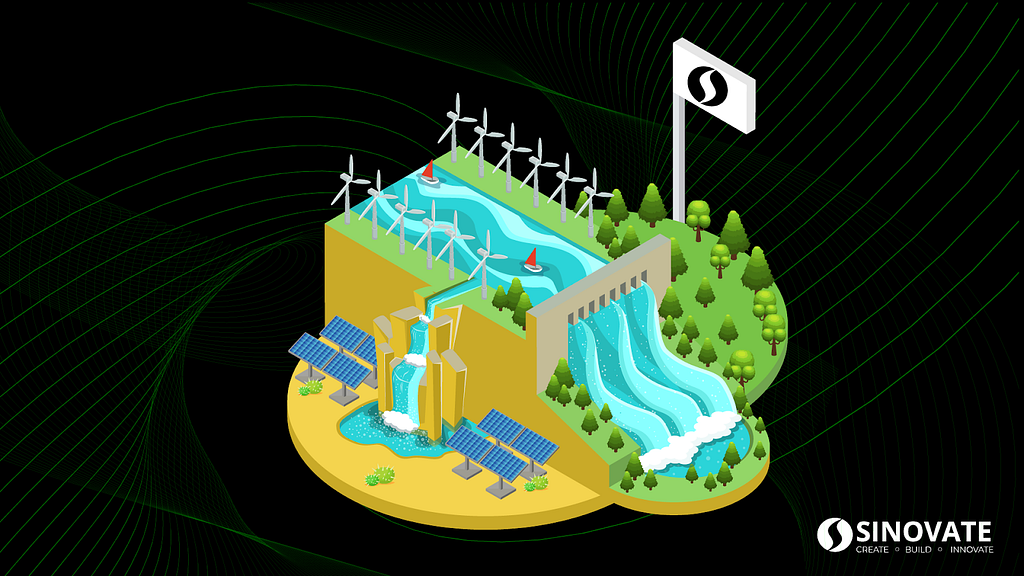
SINOVATE aims to provide a decentralized Cloud (dCloud) infrastructure to download and upload data in a secure, fast, and low-cost way. It is then necessary to build a blockchain technology that may respect Buterin’s trilemma as much as possible. Decentralization, security, and scalability is a keystone of blockchain technologies. The release of BETELGEUSE tends to respect this trilemma by guaranteeing a lower carbon footprint in its consensus.
How can a blockchain be green?
In 2008, Bitcoin, a peer-to-peer (P2P) network, generated its first block with the first Nakamoto consensus called Proof-of-Work (PoW). This mechanism puts in competition the power of multiple machines that concur to be the first to submit a valid block to the P2P network. Whereas this solution is highly decentralized and secure, its scalability and high network carbon footprint became genuine concerns for the massive adoption. Statista reveals that one Bitcoin transaction requires 10 more kilowatts per hour than 100,000 VISA transactions. However, BTC and ETH represent only 0.11% of all the CO2 emissions.

For these reasons, the blockchain ecosystem saw emerging manifold consensus solutions such as Proof-of-Stake (PoS) and practical Byzantine fault tolerance (BFT) solutions that are secure and highly scalable. PoS solutions remain decentralized compared to delegated-PoS or BFT-solving solutions where the number of validators is known and very limited.
This effective centralization of the P2P network allows these solutions to compete with worldwide massive-adopted solutions such as VISA (more than 2,000 transactions per second (TPS)). These weakly decentralized methods bring the possibility to have a very-low network carbon footprint that can be lower than the VISA system. However, could we say these technologies are still cryptocurrency decentralized solutions?
Save the Decentralization and makes the Blockchain Greener
This loss of decentralization will surely be a question that will come back to the choice of technologies in the next few years as a fundamental of humankind governance. SINOVATE cannot accept centralizing so much of the governance in the hands of a few validators. We developed in multiple steps different Nakamoto solutions by leveraging the best of the recent implementations in Bitcoin Core.
The first step is developing the X25X GPU PoW mining solution, which is designed to limit dedicated equipment while using low-power consumption for competing with other computers. A second step was to implement the Proof-of-Burn (PoB) mechanism for transaction fees and other use of the blockchain, limiting attackers’ gain. The third step was to create the InfinityNode technology, an upper-layer that provides additional security with the novel mechanism called LockReward, and complimentary services such as data storage or unique payment gateways.
InfinityNode uses the PoB mechanism to commit a 12-month service contract, a high-security vector. The InfinityNode will transfer and store data. This contract commitment in the blockchain improves the energy efficiency of a dCloud ecosystem. This is mainly due to the guaranteed uptime of InfinityNode that must recover the contract commitment with the network rewards. Hence, data proof-of-integrity does not require complex algorithms such as the proof-of-space time or IPFS. The last step is BETELGEUSE (31st of March 2022).

SINOVATE evolved its layer-1 solution to implement the first step of the fourth generation of Proof-of-Stake (PoS4) with Bitcoin Core 0.22. This makes SINOVATE a highly-decentralized triple-layered secure blockchain alongside the LockReward and X25X.
SINOVATE wanted to not use the consensus as a vector of scalability. Hence, the latest updates of the Bitcoin core allows the blockchain to increase the block size to 32 MB and 64 MB in SegWit mode with a block generation of 1 minute. This allows more than 2k TPS to compete with BFT-solving solutions. The technical solution guarantees SNOVATE a Layer-1 solution with the greenest trilemma-solving consensus.
Recent Comments